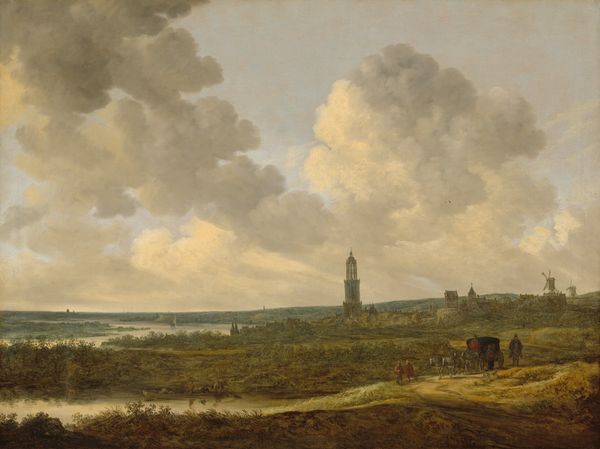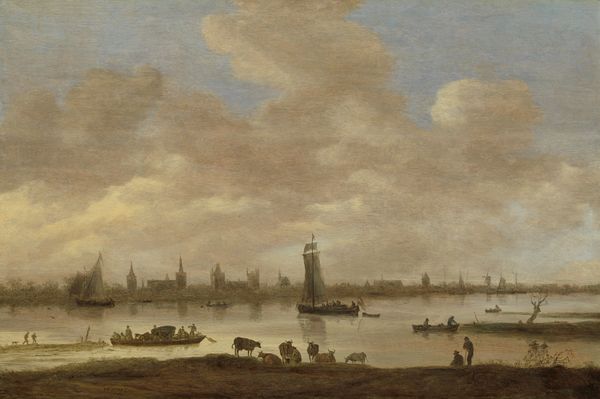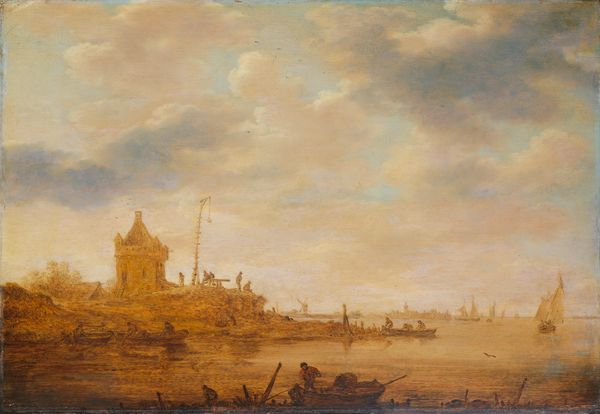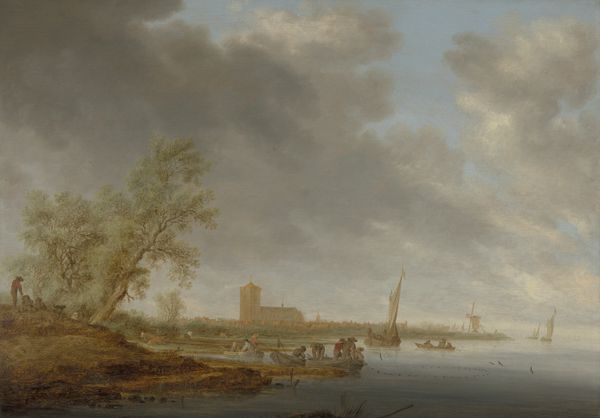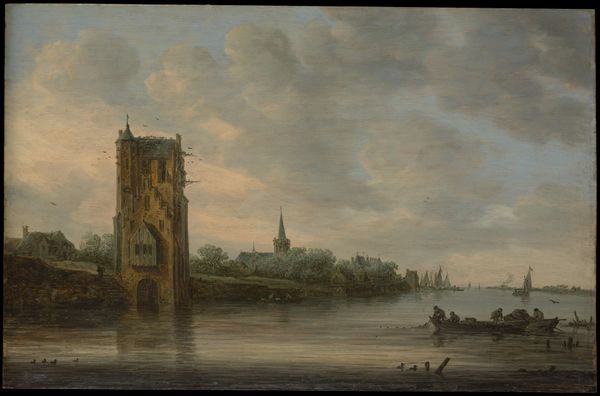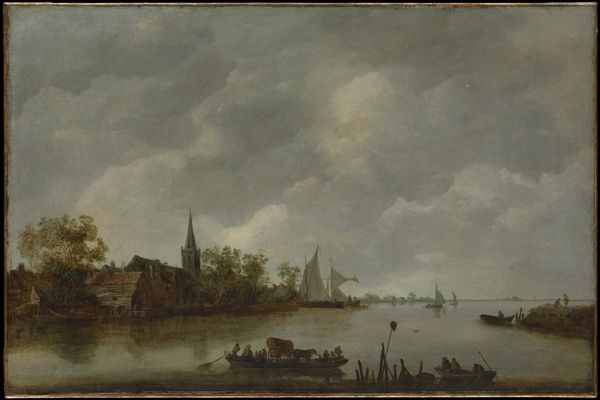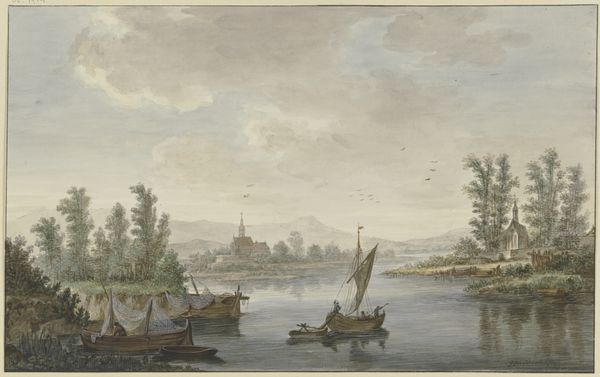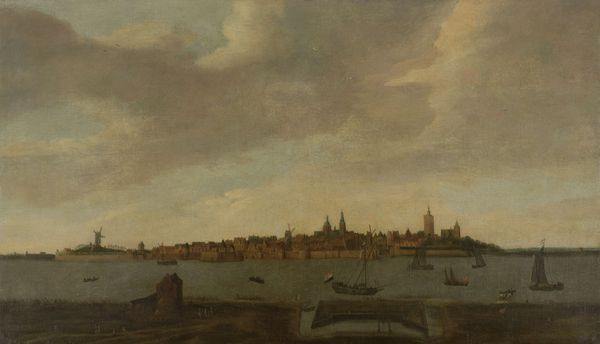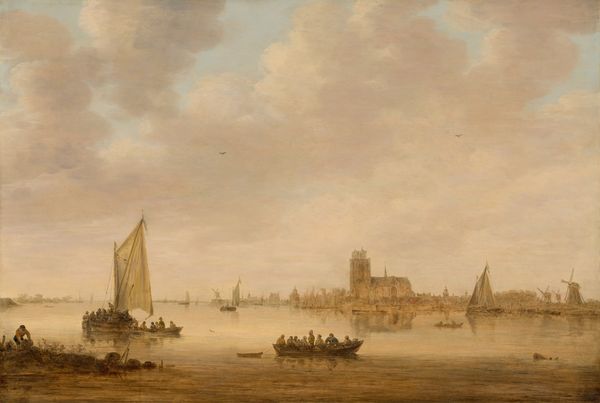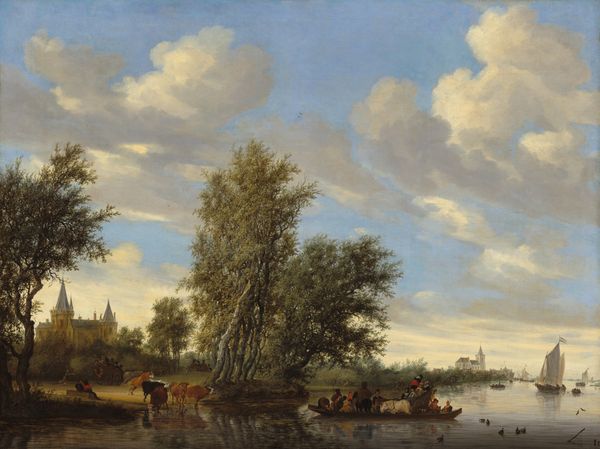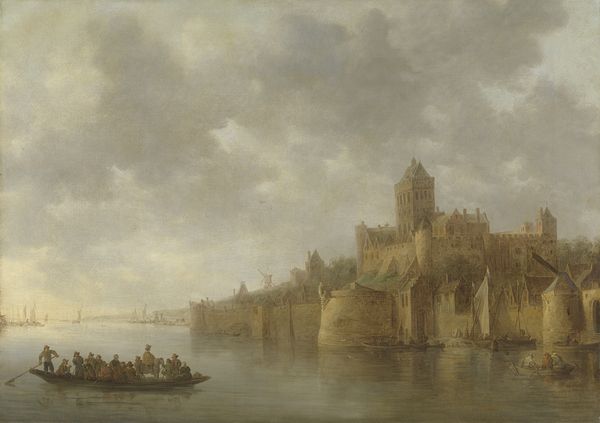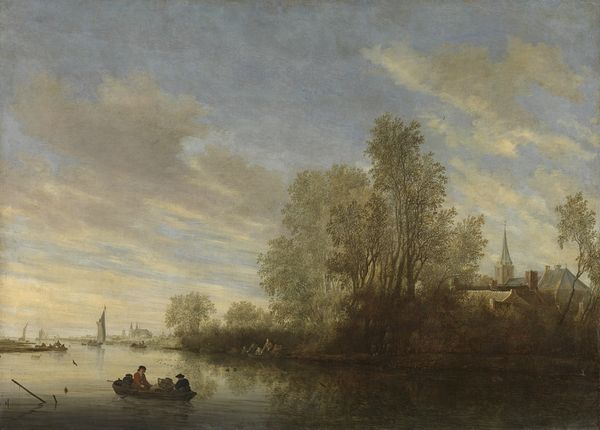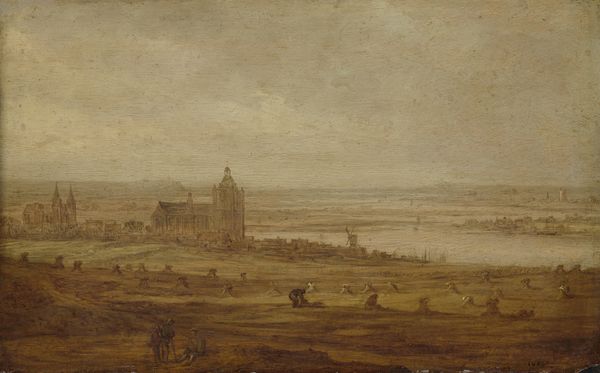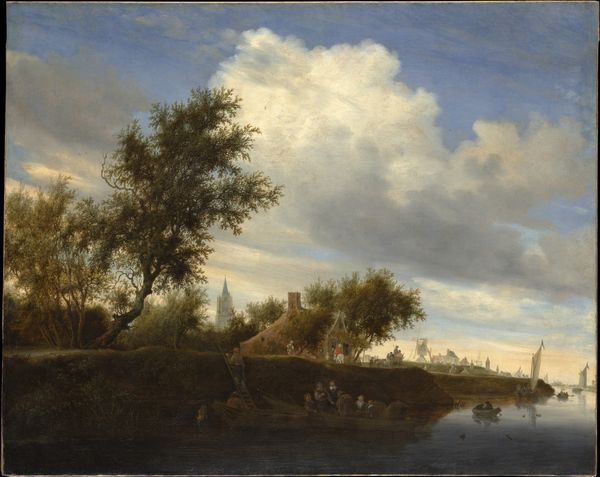
painting, oil-paint
#
dutch-golden-age
#
painting
#
oil-paint
#
landscape
#
cityscape
#
genre-painting
#
realism
Dimensions: 65 cm (height) x 96 cm (width) (Netto)
Jan van Goyen painted this 'View of the City of Arnhem' with oil on canvas. Dominating the skyline is the church tower, a powerful symbol of spiritual and communal life, its spire reaching towards the heavens, much like the Tower of Babel sought to bridge the gap between humanity and the divine. We see this striving echoed across cultures—from the minarets of Islam to the ziggurats of ancient Mesopotamia. Yet, consider how the meaning shifts. In the medieval period, such towers symbolized not only religious devotion but also the power of the church and the city. This image subtly embodies a collective desire for order and stability, set against the ever-changing sky and flowing river. This echoes humanity’s persistent quest for meaning and connection within the cosmos. The tower, therefore, transcends mere architecture; it encapsulates the cyclical nature of human ambition and faith, constantly being reinterpreted across history.
Comments
statensmuseumforkunst almost 2 years ago
⋮
In 1636/37 van Goyen lost a fortune speculating on tulip bulbs during the so-called "tulipmania". After this financial disaster he painted pieces such as a series of panoramic landscapes with the town of Arnhem on the horizon. The painting's horizontal format The characteristic belfry of Grote Kerk and the twin towers of St. Walburgaskerk are prominent landmarks. Typical features of the 1640s style include the horizontal format and the high cloudy skies above the flat landscape that pulls in spectators through the diagonal of the river, accentuated by the fields of light and shadow that divide the picture into separate parts. The artist's story Jan van Goyen was only ten when he was sent to study art in his native town of Leiden. At the age of 19 he spent a year in France and then concluded his education in Haarlem under Esaias van de Velde (1587-1630). The Haarlem master made his influence felt right up until 1626, as is evident in the figure-filled brightly coloured landscapes. Around 1630 van Goyen joined Pieter de Molijn (1595-1661) and Salomon van Ruysdael (c. 1602-1670) in founding the socalled "tonal" landscape painting, an almost monochrome vein of painting full of calm and simplicity in its representation of the nature and people of the Netherlands.
Join the conversation
Join millions of artists and users on Artera today and experience the ultimate creative platform.
